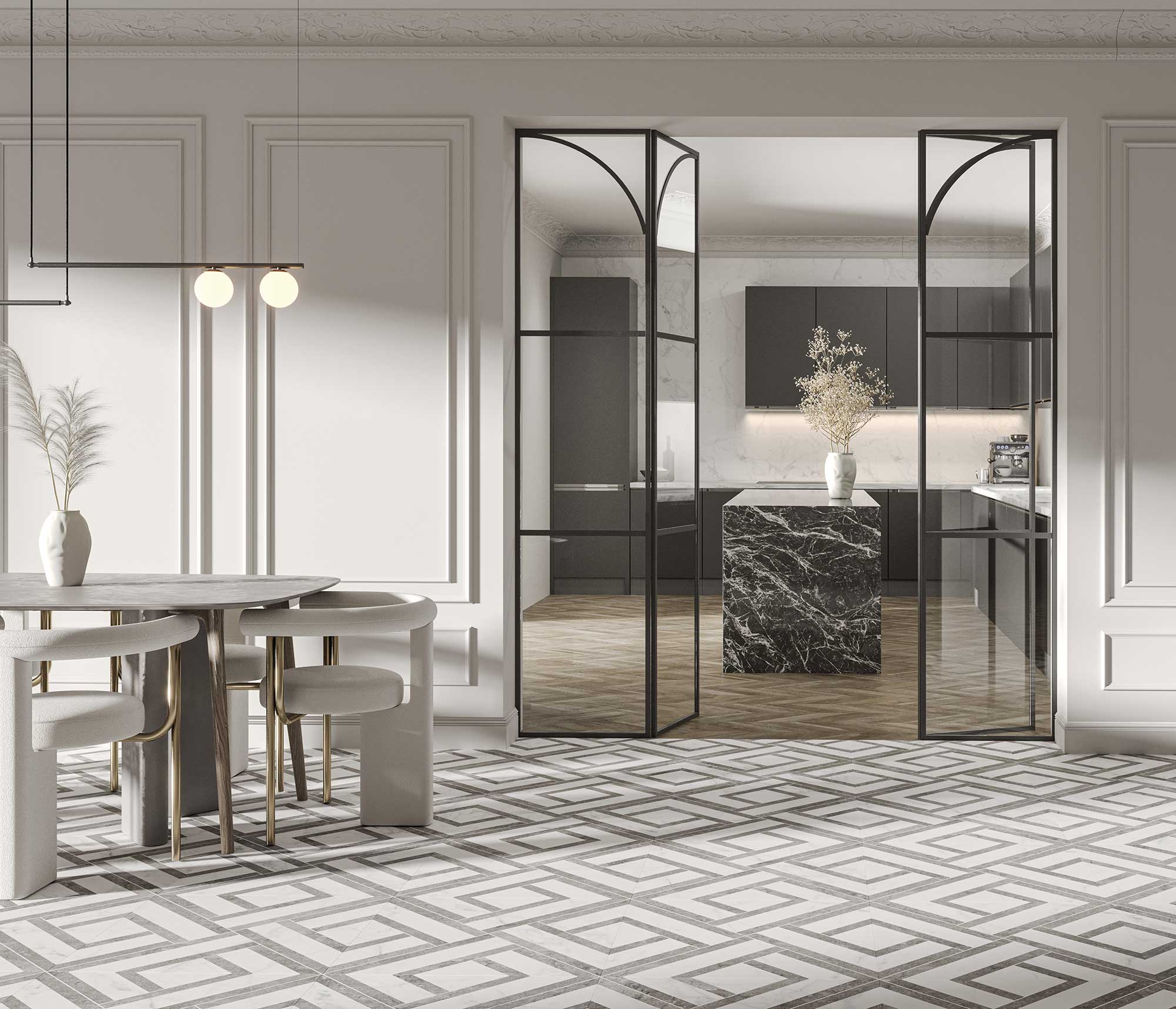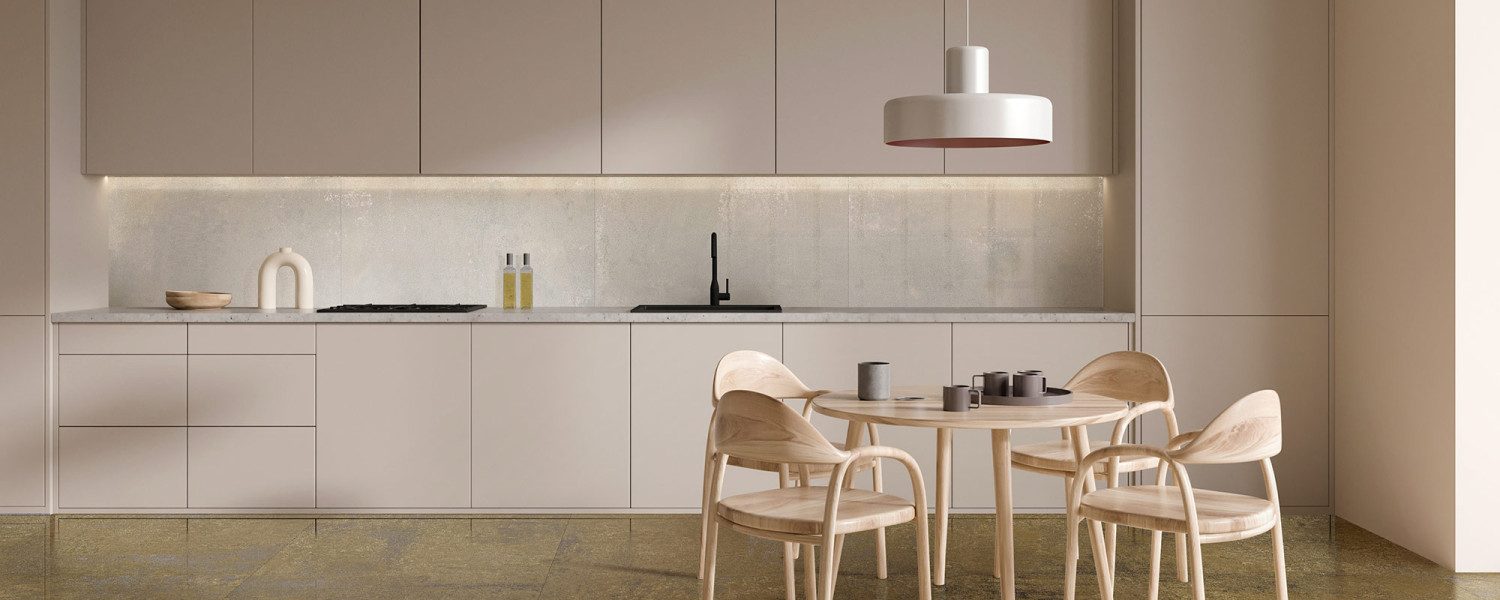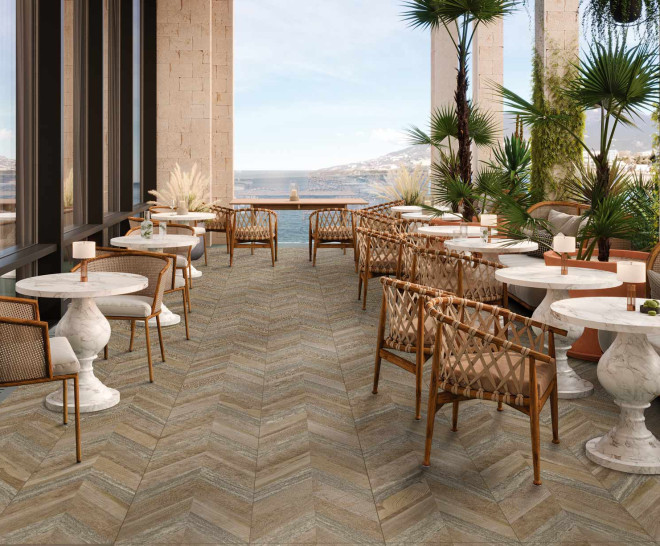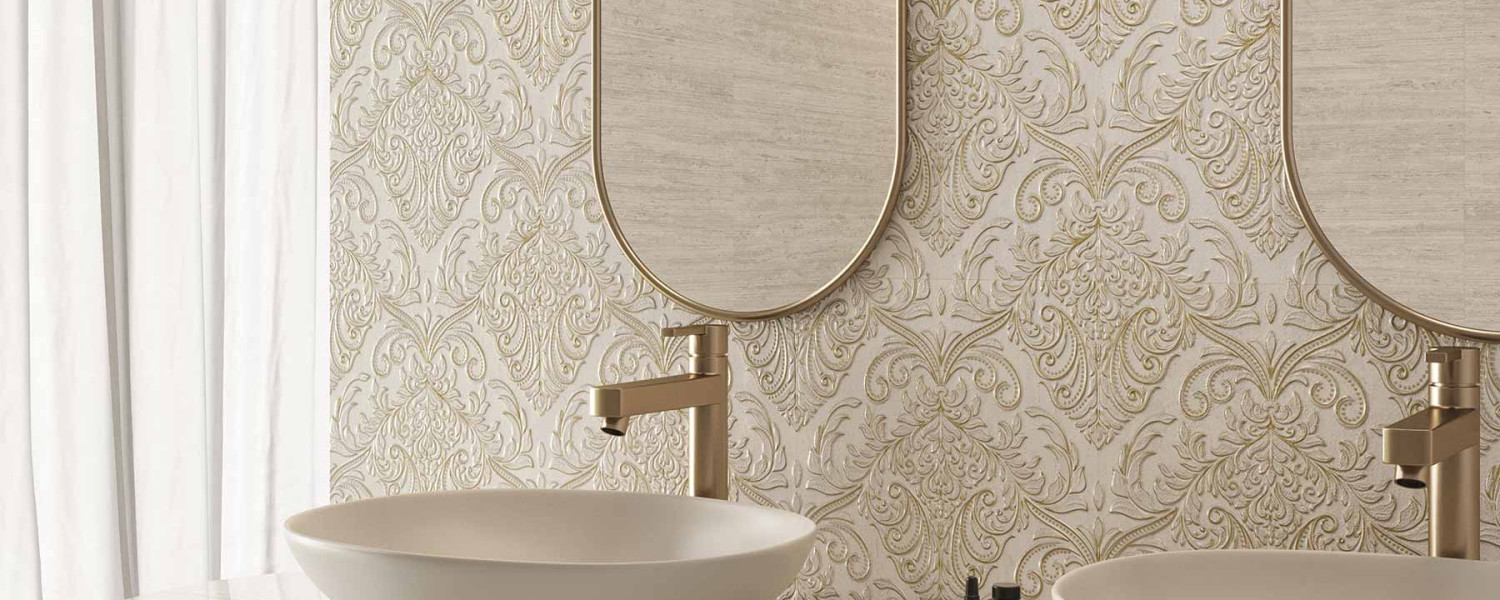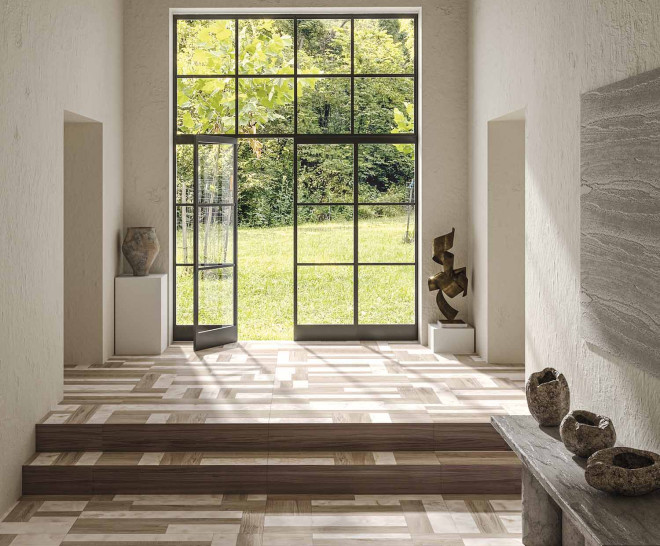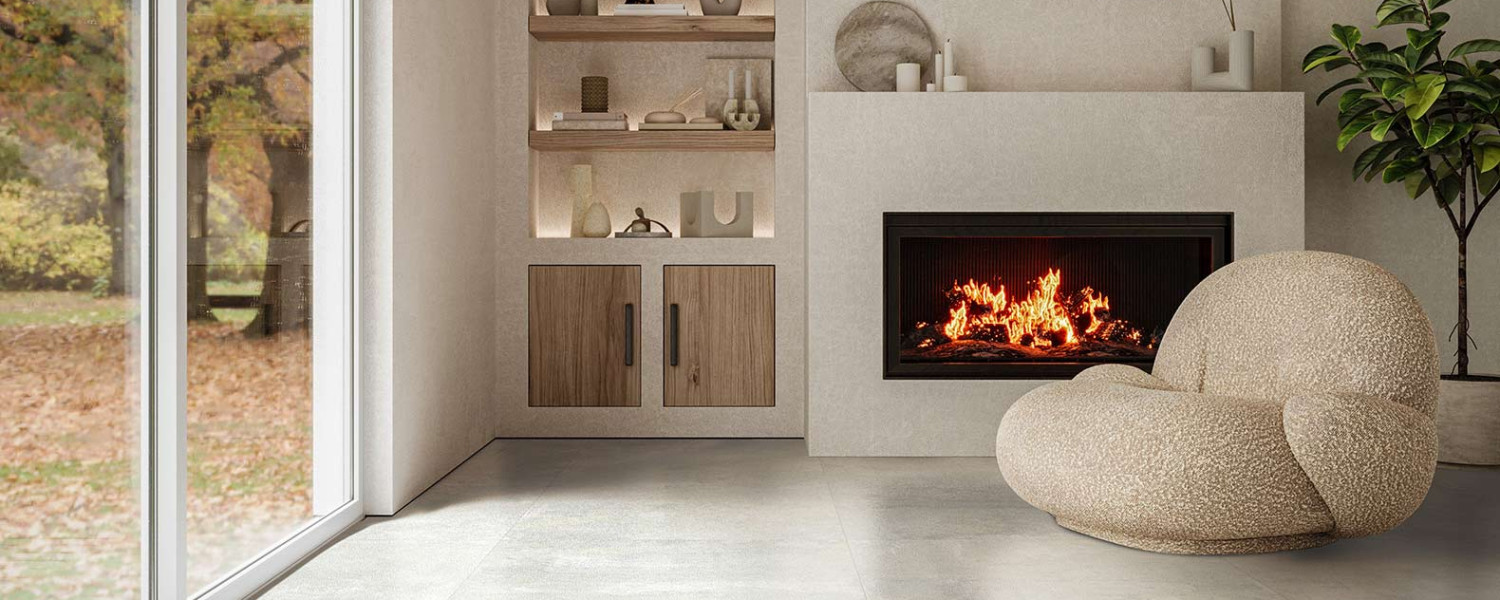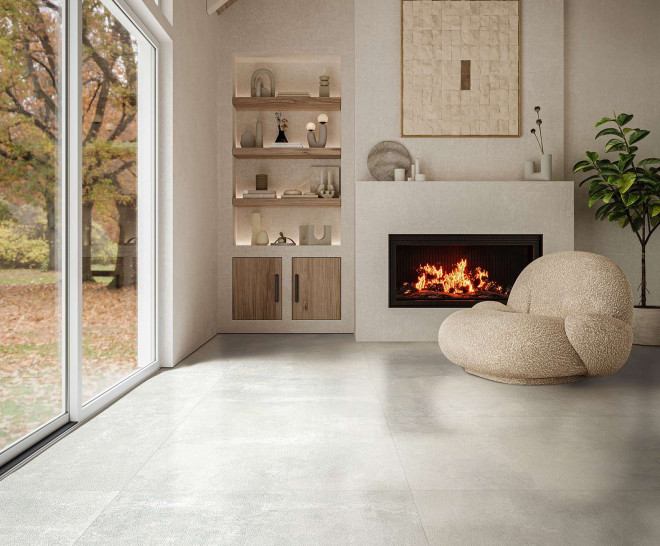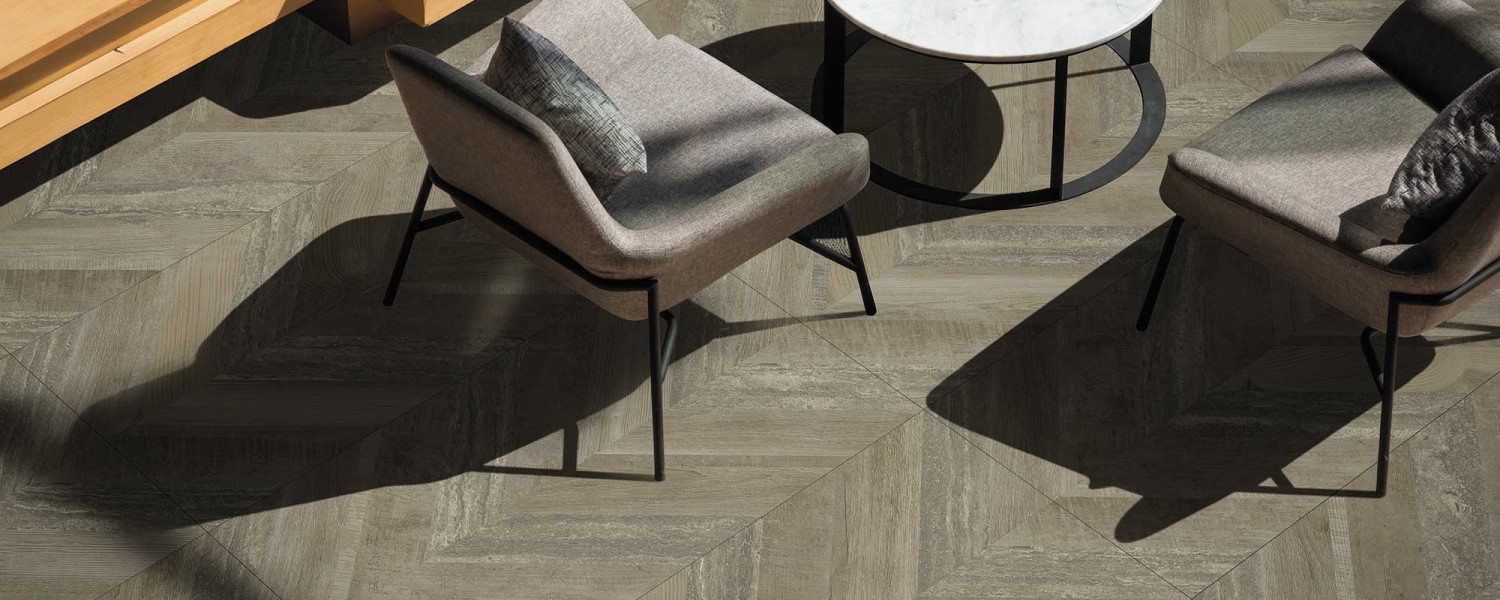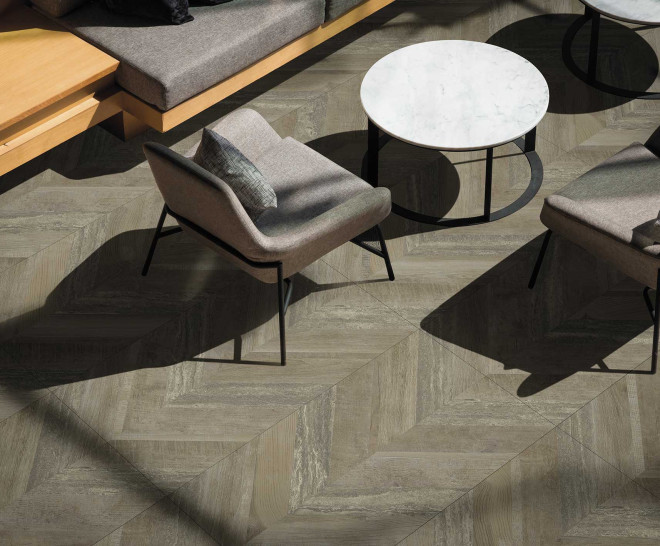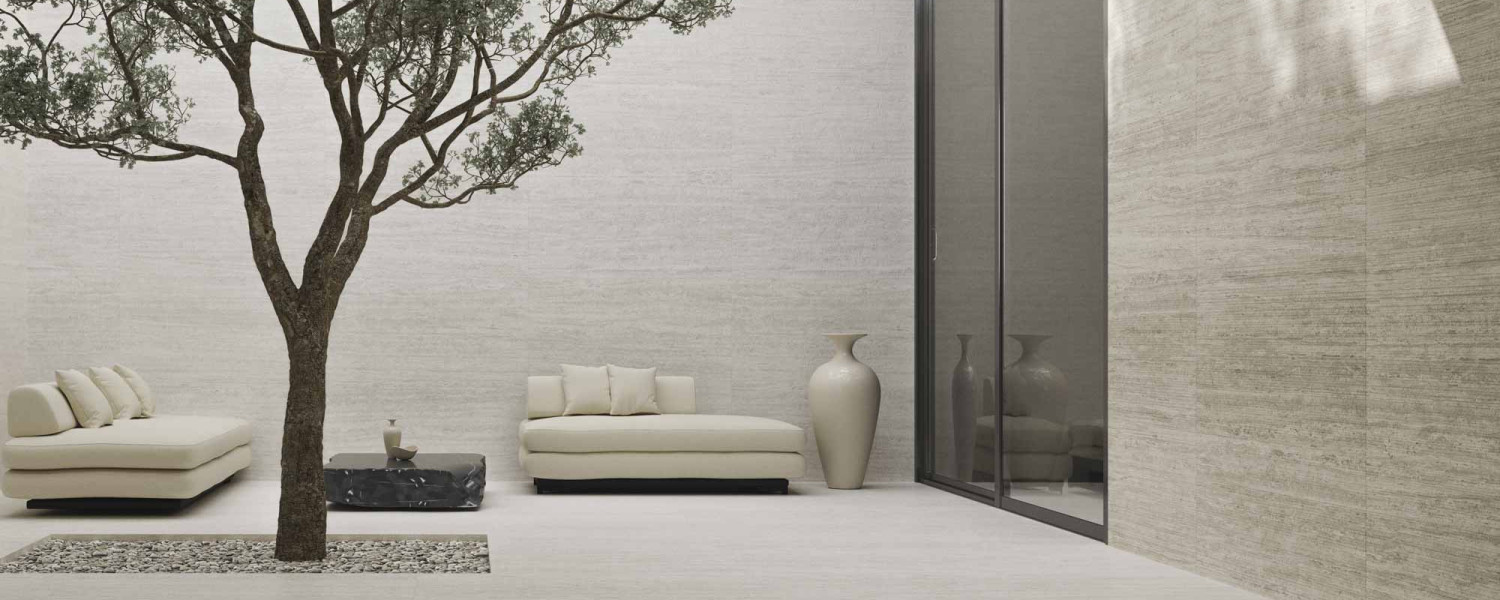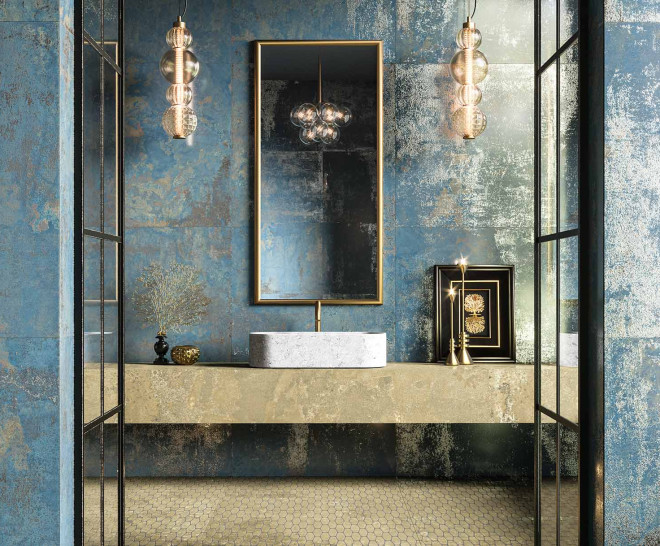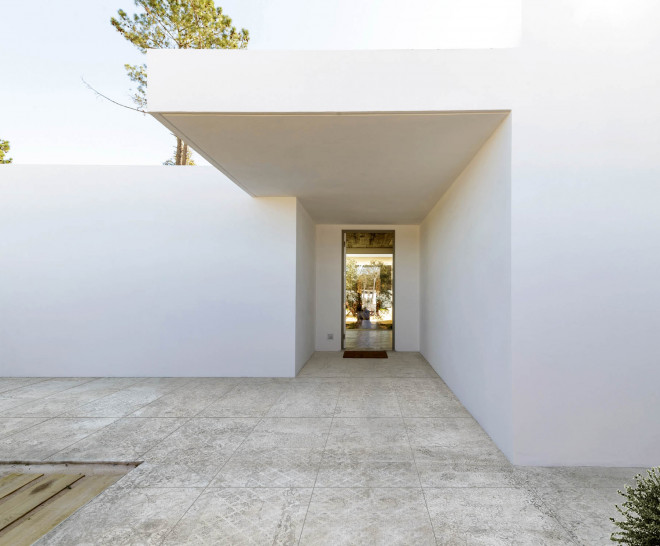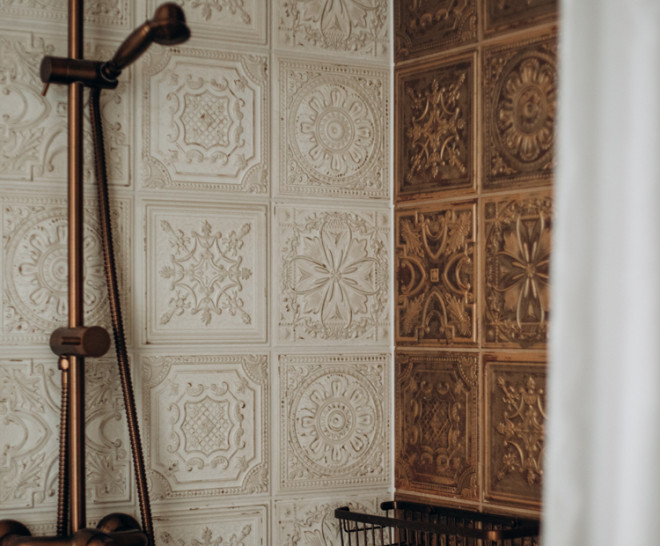The neoclassical style has stood the test of time and remains synonymous with elegance and balance. Far from being an echo of the past, this architectural and decorative style adapts to contemporary sensibilities thanks to innovative materials such as porcelain, which allows the nobility of marble, stone or wood to be recreated with a modern and functional language. Aparici reinterprets this aesthetic to offer spaces that combine classicism, sophistication and modernity.
In this article, we will discover the origins of the style, its most representative decorative features and how Aparici's collections allow it to be updated without losing its essence.

Majestic
What is the neoclassical style?
The neoclassical style emerged in the 18th century as a response to the decorative excesses of the Baroque and Rococo periods. Inspired by the architecture and art of classical Greece and Rome, this movement sought to restore harmony, proportion and purity of form. The result was an architectural style that elevated simplicity to a new aesthetic category.
Among the most emblematic examples of neoclassical architecture are the Brandenburg Gate in Berlin, the Bank of England, the Pantheon in Paris, the Puerta de Alcalá and the Capitol in Washington. All of them share an imposing symmetry, a sober structural language and a visual balance that still inspire designers and interior designers today.
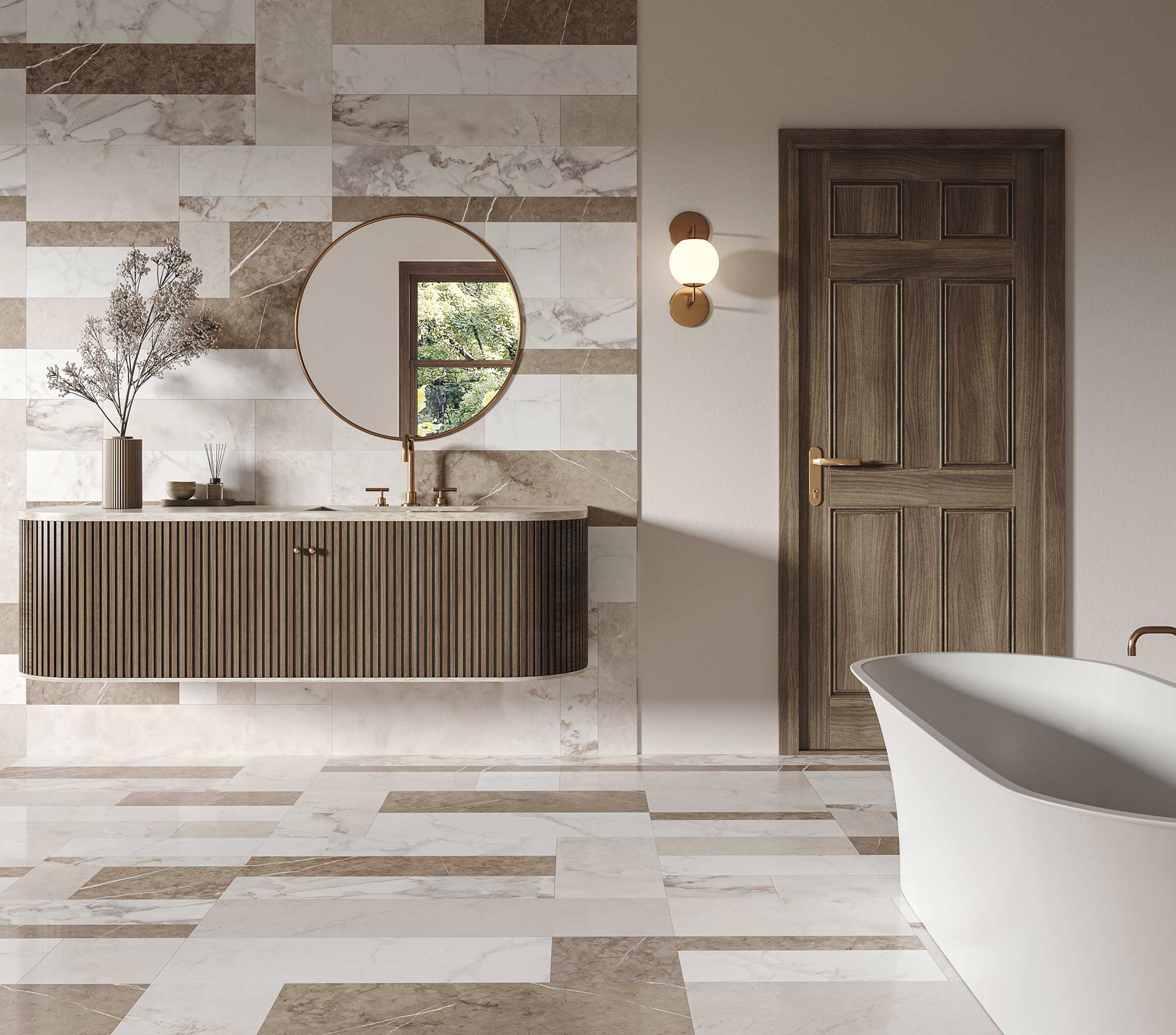
Ibiza
Characteristics of neoclassical decoration in the 21st century
Today, the neoclassical style is imbued with a serene and contemporary elegance. Its essence remains, but it adopts cleaner lines and a palette of materials that embrace warm minimalism, creating environments that are both refined and welcoming. These are some of its most recognisable characteristics:
Below, in list format, we briefly describe and explain the main characteristics
Symmetry and proportion. Visual order remains key. Some Aparici collections enhance these characteristics by drawing inspiration from the geometric effects characteristic of the style, where each element is balanced with the rest to create harmony.
Austere ornamentation. Decorative details are kept to a minimum, favouring soft mouldings, discreet reliefs or geometric motifs that add texture without overloading the space.
Neutral and warm colours. Whites, beiges, soft greys and sand tones form the basis of this style, nuanced with golden or wood tones to add depth and visual comfort.
Vertical decoration. Columns, sculptures, and classical busts now coexist with walls accentuated by ornamental coverings. Aparici's wall tile collections are a prime example.
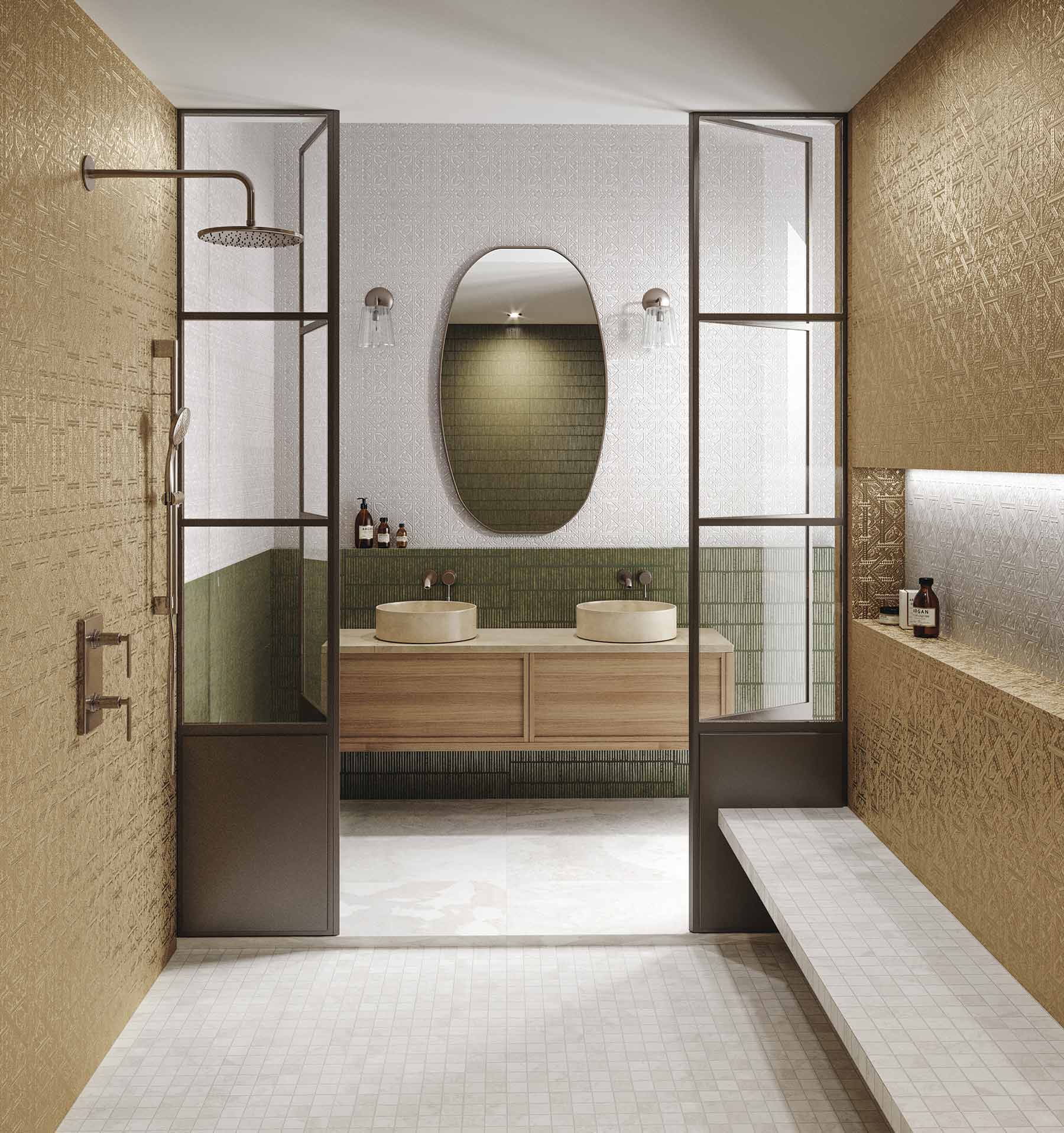
Opal
Noble materials adapted to today's demands
The noble materials that defined the neoclassical style—such as marble, travertine, and wood—find new life in porcelain tiles. This material allows their natural appearance to be recreated with all the advantages of technical surfaces: resistance, easy maintenance, and impeccable, up-to-date aesthetics.
Marble. Marble is undoubtedly the material par excellence of neoclassical architecture. Today's ceramic designs reinterpret the classic elegance of natural stone in marble-effect tiles that combine beauty and durability.
Travertine and other natural stones. Travertine and other natural stones have also regained their popularity thanks to the neoclassical style. Today, stone-effect tiles are, thanks to their subtle design and the versatility of porcelain tiles, one of the star coverings in interior design, which draws inspiration from the past to shape fully contemporary projects.
Wood. Natural wood served as a counterpoint to the use of marble and other natural stones in neoclassical interiors, providing its characteristic warmth. Wood-effect porcelain tiles reinforce this function with collections that bring back classic patterns or even combine stone and wood in the same piece.
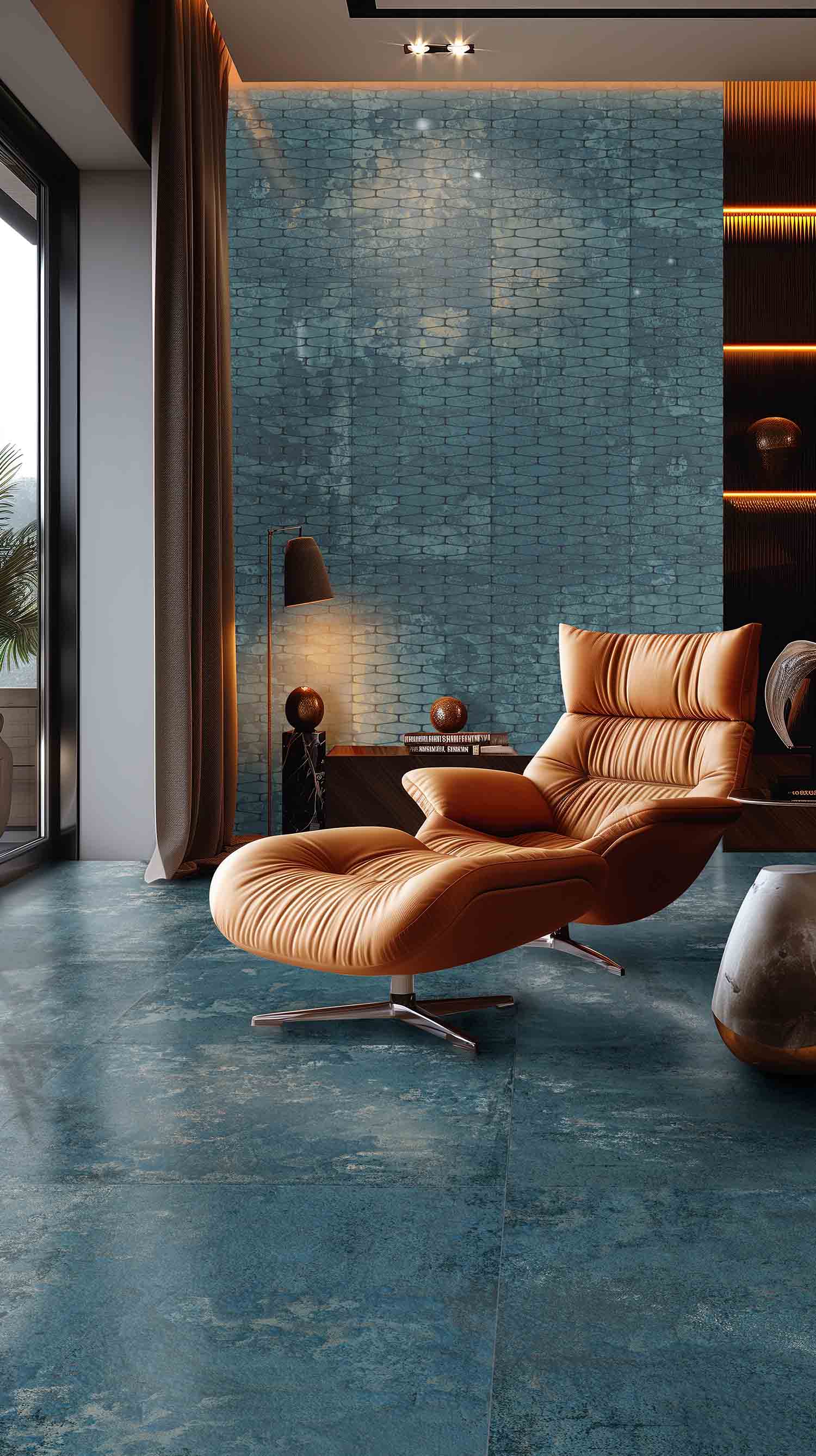
Illusion
Tiles to shape today's neoclassical style
Aparici's collections offer a decorative repertoire capable of updating the neoclassical style. Each series translates its essence—elegance, geometry, and symmetry—into designs that dialogue with current architecture and trends.
Majestic or marble reinvented
Aparici's Majestic collection transforms the classic elegance of marble into an artistic and contemporary language. Majestic White Natural stands out for its purity and unique grey veins, while designs such as Majestic Square Natural bring dynamism with three-dimensional patterns in white, black and grey. The Diagonal and Line variants complete the range with graphic compositions of great visual impact, ideal for both classic and modern interiors.

Majestic
Ibiza, marble and wood in multi-format pieces
Ibiza combines the nobility of marble with the warmth of wood in porcelain tiles that evoke artisanal luxury and refer to styles such as contemporary neoclassical. Its modular design allows you to create dynamic flooring with a single 50x100 cm piece, recreating the visual richness of multi-format tiles. A versatile proposal that combines tradition and modernity.
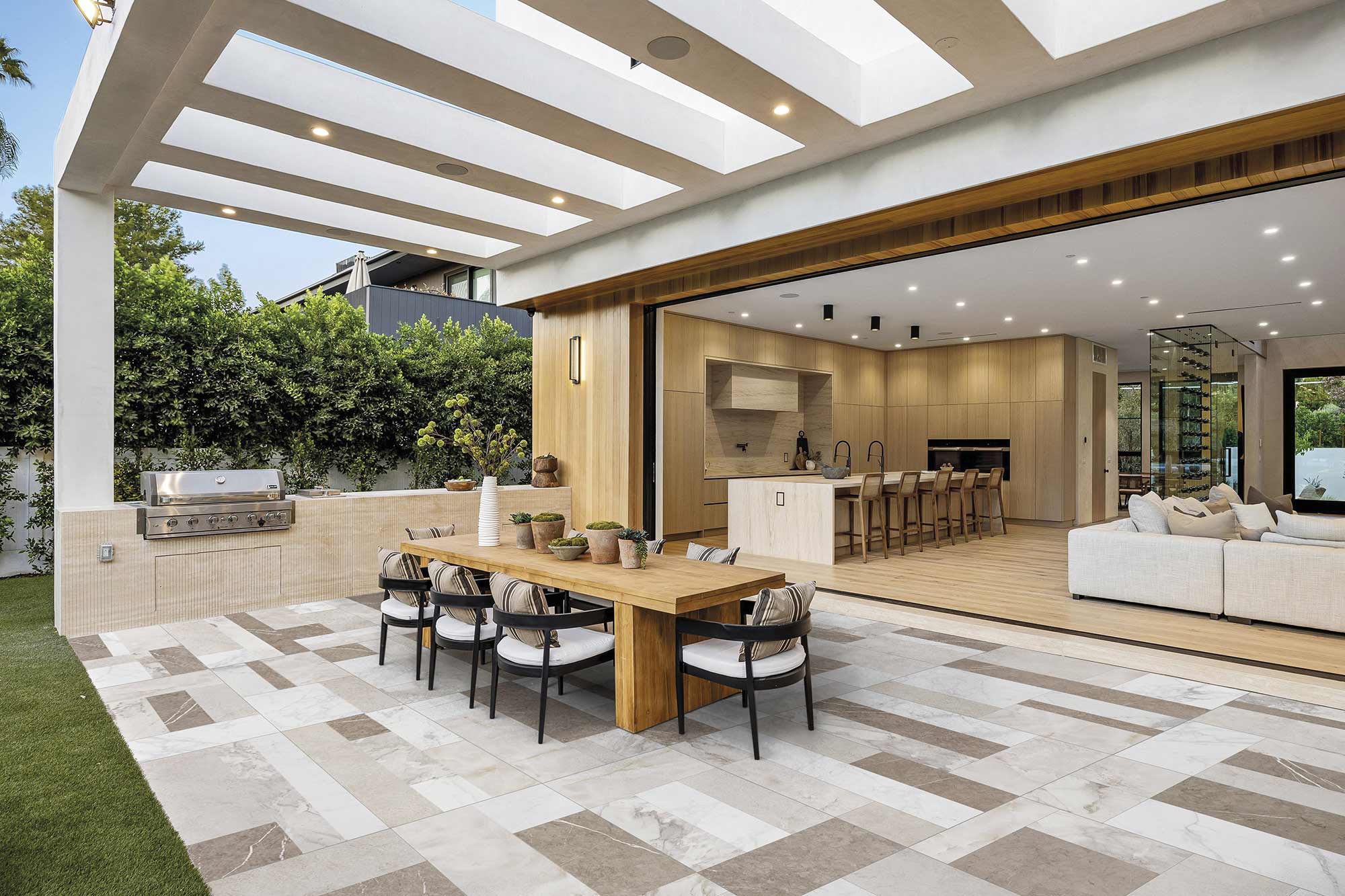
Ibiza
Illusion, play of light and visual effects
Illusion collection is committed to innovation. Its geometric textures and three-dimensional patterns play with light, creating reflections and shadows that transform every space. Ideal for floors and walls, Illusion adds a touch of mystery and movement, reinterpreting classicism from a contemporary perspective.
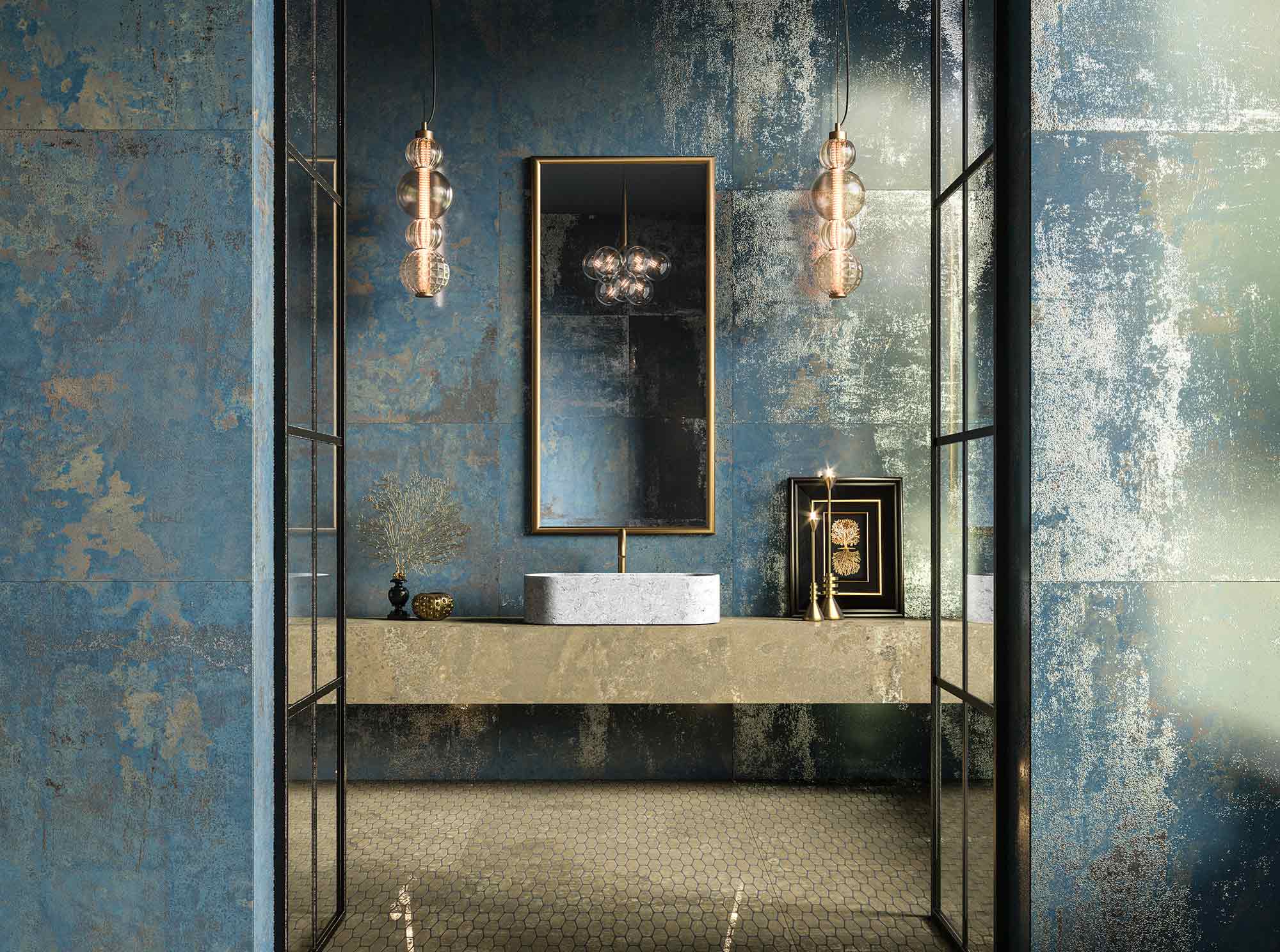
Illusion
Chevron, neoclassical warmth in herringbone pattern
Chevron captures the natural elegance of French oak with surfaces that evoke the texture of aged wood. Available in Oak and Walnut tones, this series offers sophisticated flooring with a herringbone pattern, a symbol of classic refinement. Its Stamp version combines wood and travertine, expanding the decorative possibilities.

Chevron
Opal, golden sparkles
Opal designs are distinguished by their rich graphics and mix of geometric and plant motifs. Opal Noce Cora pieces feature warm, earthy tones that evoke the patina of time, while Opal White Cora brings luminosity and serenity. Both options invite you to create sophisticated and welcoming environments with neoclassical expressiveness in mind.
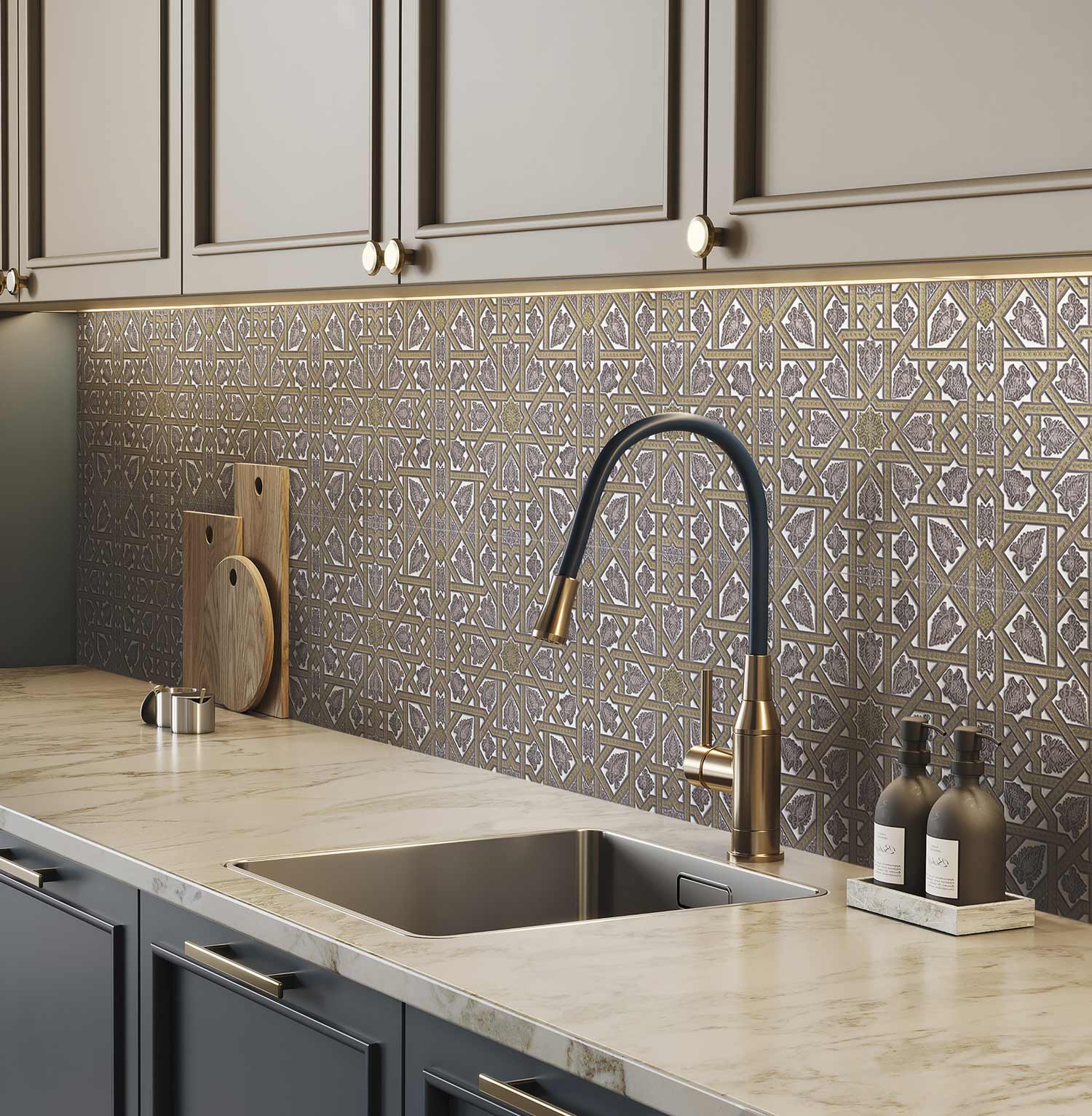
Opal
Umbria and the elegance of travertine
Inspired by the timelessness of travertine, the Umbria collection fits the neoclassical style like a glove. Its Sand and White tones offer two interpretations of the stone: one warm and earthy, the other bright and pure. The Rigato version provides linear relief inspired by classic rigato, achieving a subtle and elegant decorative effect.
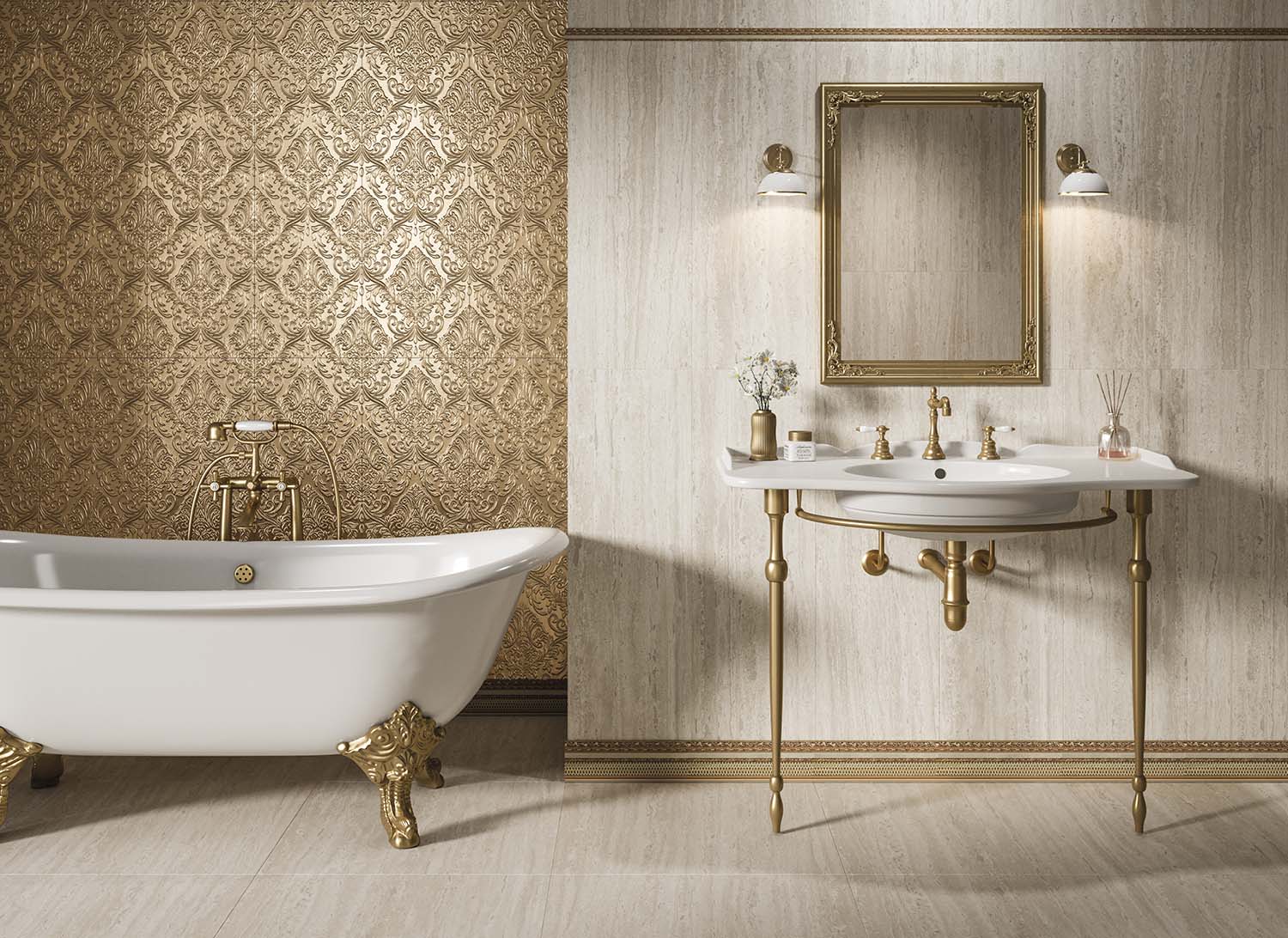
Umbria
The neoclassical style proves that elegance never goes out of fashion. In its contemporary reinterpretation, it combines the serenity of classic forms with the technical innovation of porcelain tiles. Aparici offers an extensive catalogue of collections that allow you to explore this balance between tradition and modernity. Discover how to reinterpret classic elegance with us!

